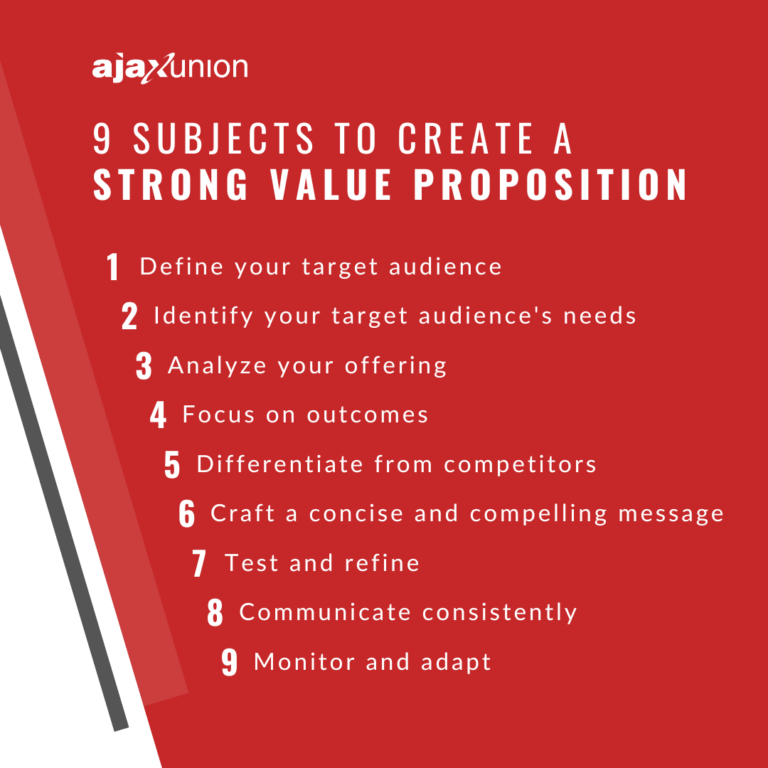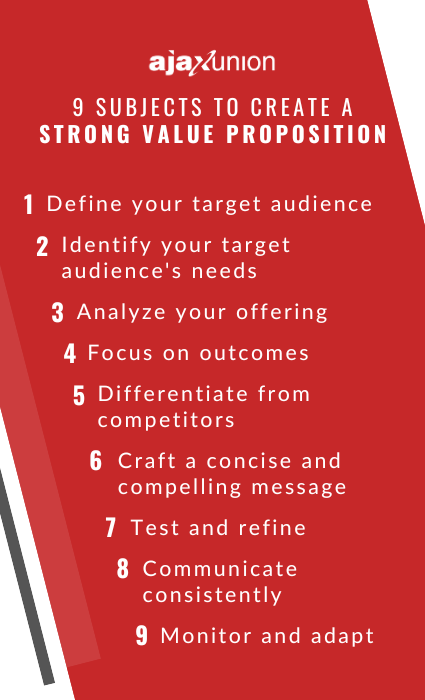For businesses well-established or just lifting off the ground, it can sometimes be difficult to come up with a strong value proposition that will set you apart from your competitors.
While it may seem like a simple task, it can quickly become overwhelming when you are trying to analyze every aspect of your business to develop a strong value proposition.
From customer service to advertising and everything in between; the difficult task you have assigned yourself is picking out the minute details that matter in every aspect of your business.
It is important to highlight the features and services of your business or product in your value proposition; it is also equally important to have a customer-centric approach. What is a customer-centric approach?
A customer-centric approach to a value proposition means putting the customer at the center of your messaging and tailoring your value proposition to address their specific needs, challenges, and desires.
However, this is just one thing to keep in mind when creating a value proposition. Here we will cover 9 important subjects to keep in mind to create a strong value proposition.
9 important subjects to keep in mind to create a strong value proposition


1.Define your target audience: As previously mentioned, it is extremely important to not only keep your customer top-of-mind but to also closely define who your target audience is. What age group are you targeting? Are you targeting a specific industry? Is company size a factor in whether or not you will work with them? Once you have it narrowed down, then you need to identify your audience’s pain points, challenges, and goals.
2. Identify your target audience’s needs: Building off of what was previously said, you need to spend time identifying what your audience needs. One must fully understand what problems they are trying to solve and the outcomes they desire before shoving products or services in their face. Conduct thorough market research and engage with your potential clients to gain insights into their needs and priorities.
3. Analyze your offering: After you have your target market identified and analyzed, now you can move into analyzing your business, product, or service. Evaluation of your product or service is key to identifying the unique features, benefits, and capabilities of that product or service. What specific value does your offering provide to your target audience? What capabilities do you provide that set you apart from your competition?
4. Focus on outcomes: B2B clients are more often than not more interested in the outcomes and results your solution can deliver rather than just the features alone. Present the specific benefits and results your (potential) clients can expect from using your product or service. How does it help them save time, increase efficiency, reduce costs, or generate revenue?
5. Differentiate from competitors: Once you have focused on your benefits, results, and unique features, identify and highlight your unique selling points in your value proposition. Focus on aspects that are the most important to your target audience. What makes your offering different and better than alternatives in the market that you are in?
6. Craft a concise and compelling message: Once you have a clear understanding of your target audience, their needs, and your unique value, craft a concise yet compelling message using the information at your disposal. Keep it simple, focused, and easy to understand. Use language that resonates with your target audience and again highlights the benefits they will gain.
7. Test and refine: You didn’t think you could create a perfect value proposition in your first go, did you? You need to test your value proposition with your target audience to gather feedback and refine your message if needed. Helpful ways to get that feedback include: Surveys, interviews, and focus groups are the easiest and most effective ways to gain this valuable feedback. Then make any adjustments necessary.
8. Communicate consistently: Think of all the channels that your business uses, and uses to communicate your message through. You probably thought of a decent amount including a company website, Facebook, LinkedIn, Instagram, Tik Tok, Snapchat, Twitter, Indeed, and many others.
Ensure that your value proposition is consistently communicated across all marketing channels and touchpoints. This even includes when you are talking, texting, emailing, or calling a client. The message should be clear, consistent, and aligned with your brand and voice.
9. Monitor and adapt: Once you have a value proposition you are confident in, have gone through testing, and are ready to fully implement it; you need to be prepared to adapt your value proposition to stay relevant and meet changing requirements. Continuously monitor the market, customer feedback, and the competitive landscape that surrounds your business, product, or service.
Remember, a strong value proposition is customer-centric and focused on solving specific challenges faced by your clients. Then delivering meaningful outcomes that will help solve those challenges.
By understanding your target audience and effectively communicating the unique value your offering provides, you can develop a compelling proposition that resonates with B2B clients.
Does your business need marketing support? Schedule a FREE strategy session with us and we’ll give you personalized insights on your business and be sure to ask you the right questions!
For more helpful information on B2B Marketing check out our resource library.
